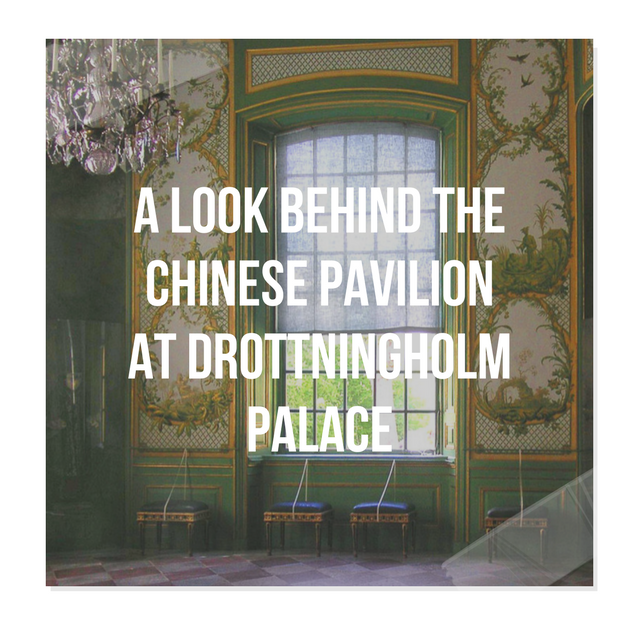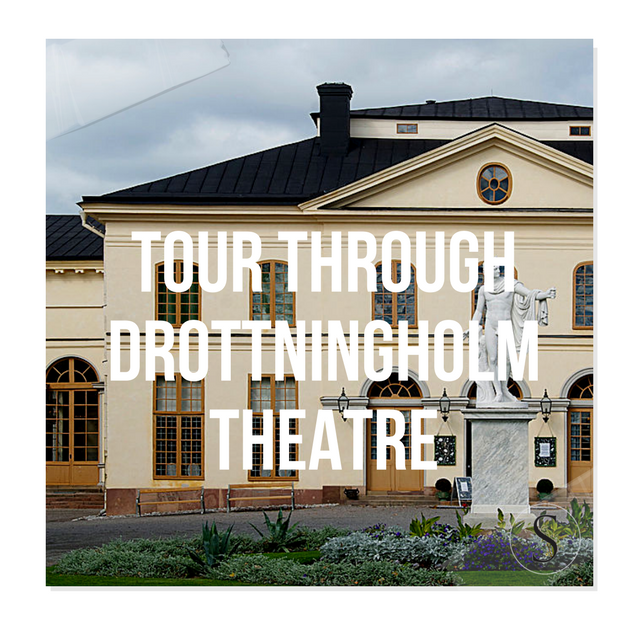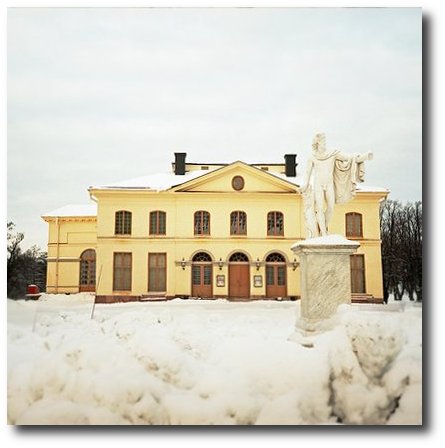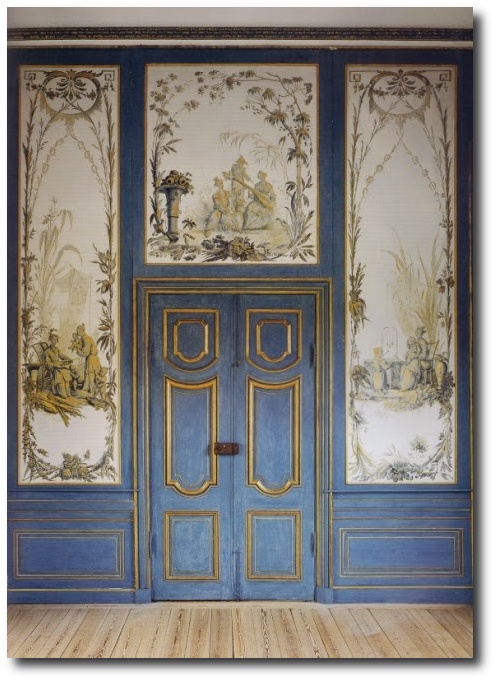Scandinavian Antiques began as a wholesale company based in Denmark 25 years ago, with business in Sweden, Germany, […]
Author: Meranda Devan
The Belvedere In The Park of the Petit Trianon The the Petit Trianon was designed by Ange-Jacques Gabriel […]
Over the last several years I have jumped into upholstery without any experience, and through all the mistakes […]
Drottningholm Palace also has a theatre that sits directly beside the palace. The Drottningholm Palace Theatre, or in Swedish called “Drottningholms Slottsteater” is an opera house from 1766. Today it is run by a private foundation, but still functions as a real theatre! The theatre was built for Gustav III by his mother in 1766. Gustav III loved the theatre so much and was often known as the theatre King. In 1792 when he was assassinated, his mother Louisa Ulrika of Prussia decided to close up the theatre at Drottningholm. Then in the 1920s it was rediscovered, and because the theatre had not been used or touched in so many years, almost all the original equipment is still there.
This wonderful group of pictures came from TC4711 on Flicker, and Sim 1 Travels
I am so thankful to people like Hansn’s Flicker who have taken pictures for us to view. King Gustaf III had this lobby made as an addition to the Court Theatre in 1791. It was also used for having breakfast. Musicians then sat on the upper floor making the music sound like coming from the heaven painted on the ceiling! When the King was murdered one year later the theatre was closed and it stayed closed for 130 years. Check out the marble finish on the walls. There are so many colors of faux marble wallpaper that you can put up to give the look of a high end interior marble. Add a tinted glaze over top of the wallpaper to mute the overall look so it doesn’t appear to be wallpaper. There are also many free videos on You tube today with Master Painters who show How to achieve these looks. If you are willing to learn, it just takes some practice.

The Chinese Pavilion (In Swedish: Kina slott), is located on the grounds of the Drottningholm Palace park. The royal pavilion is one of Sweden’s Royal Palaces. The first castle building was built in 1753 and was a birthday gift to Queen Lovisa Ulrika from King Adolf Fredrik. After a few years was, however,it demolished because of decay, and in 1769 was new Chinese Pavilion finished, designed by architect Carl Fredrik Adelcrantz.
The rooms are decorated with chinese and some japanese wallpapers, wallpanels, paintings and objects. The environment of Drottningholm Palace – the palace, theatre, Chinese Pavilion and parks – is the best example of an 18th century royal palace in Sweden and is also representative for European architecture of that period.
Check out this website for one of a kind looks at the various repairs to the Kina Slott
Chinese Pavilion at Drottningholm is essentially rococo. It was intended to have an exotic Chinese-inspired character, containing Chinese elements which were the highest of fashion at that time. The royal court’s chief supervisor Jean Eric Rehn was the man who led the work with the interior design. The construction of the pavilion began in 1763 and then was was completed in 1769. The Chinese Pavilion was renovated in 1943-55 and the interior in 1959-68. A thoroughgoing restoration of the exterior was started in 1990
Chinese chinoiserie mixed with the extravagant style of rococo makes this palace a very unique feature of Swedish architecture. The Chinese Pavilion seemed to have functioned as a sort of royal getaway, as just a mile away, the environment changed into something foreign. There are entry halls, corridors and wings to this pavilion, as well as several parlors (audience chambers, or talking rooms), kept apart by different color schemes. There is the Green Parlor and the Embroidered Room which is the parlor designed in red. For inspiration they used all kinds of goods imported from China such as lacquered boxes and the classic Asian design on furniture and objects.
Modestine Blog describes the Chinese Pavilion- “A walk through the gardens in the warm sunshine brought us the Chinese Pavilion. Externally it was symmetrically balanced with curving wings and was decorated with gold painted Chinese figures and dragons. Inside, the walls were lined with hand painted Chinese silk wallpapers, each room in a different colour, reflecting different moods. The furnishings obviously came from China, almost certainly produced for the enthusiastic European market at that time. There were huge Chinese vases, bamboo shelving, oriental style chairs lining the walls and cabinets of Chinese ceramic figures.”
One of my favorite Blogs –18th Century, Johanni (as there are so few blogs that focus on 18th century living), took some fabulous pictures of her robe à la polonaise at the Chinese pavilion at Drottningholm. Here are some of her flicker pictures that show her in the palace. It kind of gives you a glimpse of what it may have looked like back in the day.
Chinese Pavilion at Drottningholm- Picture Credit- rebeccaloewke.com
Chinese Pavilion Blue Salon Drottningholm Found on abebooks.com
Detail of rare Gustavian bench from the late 1700s- thelilyhome.blogspot.com If you have not bought a hand made […]
The Swedish Wooden House by Lars Sjoberg and Ingalill Snitt shows magnificent castles, impressive mansions and simple farmhouses. […]
Carolyn Roehm has long been noted as one of the top interior designers in the industry. What makes her book […]
Picture Credit –Country Craft House French Iron Rustic Teal Blue Cafe Chair – $216 On Amazon Metal acessories […]
Tara Shaw has a keen eye for good looking antique furniture. Like many dealers who buy antiques from Europe and […]
The color red has been distinctive color in Sweden in the 17 and 18th centuries. Falu red (pronounced “FAH-loo”, […]
Scandinavian Design by Lars Bolander withHeather Smith MacIsaac Tripod tables were designed originally to serve tea. Some were […]
The Beautiful colors found in the Farrow and Ball Paint Line Plain English Kitchen Designs in the UK shows […]
I was running through the Style Files Blog, and I stumbled across one of my favorite pictures, and […]
Restoration Hardware never fails to impress. For some time now, they have been featuring french furniture, but have […]
Palladianism was based on the writings of Andrea Palladio (1508–80) who was perhaps the greatest and most influential […]
I stumbled across a fantastic blog called Life in The Fun Lane the other day and I was […]
Houses are built much differently than they were in the past. Today we find the goal of most builders […]
If you love the Swedish style, it’s a high probability that you also love the pastel tones that […]
Country living is wrapped up in modest, yet meaningful details. The mixture of the old furniture and primitive […]
Swedish Blue Stefan Chair by Aidan Gray Aidan Gray Dining Chairs Founder and head designer of Aidan Gray, […]
Lovely Burlap Lamp Shades From Pottery Barn If you are looking to add a touch of Swedish appeal in […]
Howard Miller Red Mora Grandfather Clock Having a Swedish Mora Clock on display in your home is just […]
Mallery Hall The Mallery Hall Collection and The European House bring to you antique Swedish furniture reproductions for half the […]
Jeffrey Bilhuber gives hope to all of us. He had his first start in hotel management, and studied at the protegious Cornell […]
Uttermost Gavorrano Bombe Foyer $1,075.80 You have most likely run across some of Uttermost’s ads as they have been […]
Lars Sjöberg is well known for his Swedish guides on Gustavian interiors and 18th and 19th century Swedish […]
Q&A with Edie Van Breems and Rhonda Eleish of Eleish Van Breems Authors Rhonda Eleish and Edie Bernhard […]
Suzanne Rheinstein The photos above and below were taken in a room designed by Suzanne Rheinstein at the […]
Swedish Furniture & Decor Ideas – Directoire Chest By Wisteria This chest from Wisteria is one of my […]
Ramie is also very comparable to linen and is also of a plant fiber from an East Asian plant. Ramie is […]
Book Review: Jocasta Innes Scandinavian Painted Furniture Jocasta Innes is the internationally renowned author of over sixty books […]
Tea Stained Fabric From Country Living Magazine Tea staining is one of the best kept secrets that designers use […]
Carol Glasser Carol Glasser; one of one of Houston’s finest interior designers immediately sought the insight of renown interior designer Katrin […]





